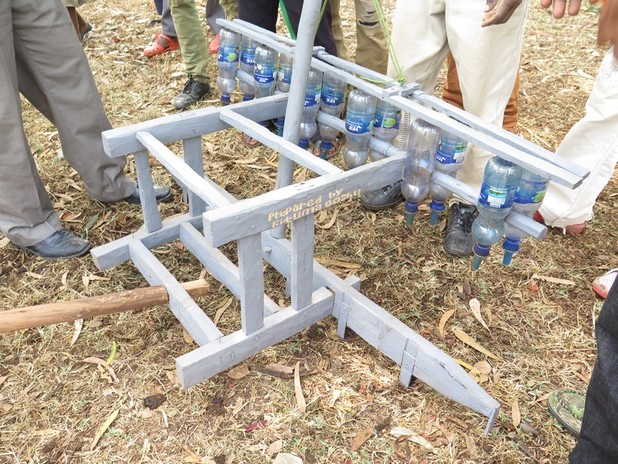June 10, 2014
Now several months into IDEO.org’s engagement with the Agricultural Transformation Agency (ATA) in Ethiopia, Remy Pieron gives an update on the next phase of the project and the next steps in scaling the teff row planter.
After two great trips to Ethiopia and some more time for refinement on the loose ends, IDEO.org has signed on to do some additional phases for this project. Thanks to some quick action from the ATA and the Gates Foundation we were able to seamlessly transition without a break in work, with a new goal to produce 30 of our newly redesigned planters in time for this year’s teff planting season. In doing so, we’ll incorporate what we’ve learned from the farmers, field tests, and fabrication shops to create something that can be made in part in Ethiopia and better serve the farmers.
To accomplish this we’ve put together an exceptionally strong team. IDEO's Jim Yurchenco will be taking on a more direct role leading the project and acting as the mechanical design guide. Remy will be continuing and joined by another IDEO engineer, Aaron Peck. While we are sad to see Martin and Ravi rolling onto new projects, they’ll be checking in on our progress periodically.
Now the fun begins. We are taking a look at every system on the planter and seeing how we can simplify and improve. We’ll start with the more complicated metering systems and work our way around to the simplest pieces all the while improving reliability and usability—for example, using the handle as a carrying bar to make it easier to carry the planter to and from the fields (a suggestion that came directly from farmers). Waterproofing is another big hurtle since planting teff happens in the rainy season, and teff seeds are all too willing to stick together when wet.
We’ve also signed on to do an investigation on compacting, the act of pressing the seeds and fertilizer directly into the soil. Aaron will be focusing on this towards the end of this phase, but we’ve already started looking into creating our test plot. The Palo Alto facilities team was kind enough to lend us the use of a small strip of dirt that we can turn into a mud pit so we can mimic the soil conditions in Ethiopia as closely as possible. To this end, we’ve ordered a bunch of clay dust to add to our soil in an attempt to replicate Vertisoil, the 40% or higher clay content soil common in much of Ethiopia.
With the ATA’s help we are going to form a partnership with a fabrication shop in Addis Ababa that is capable of turning out quality parts. Instead of incurring the cost of shipping entire planters, we are making a big push to have all the bulkier items be made there. We really want to find a shop that’s excited about the project and will be a true partner during this process. In our next trip to the field, we’ll be assembling planters, meeting with manufacturers, and doing more testing of both planters and compactors. The planter still hasn’t been tested in real world planting situations so this will be the true test of how far we’ve come since last November.
Ideally IDEO.org is hoping to help the ATA better understand the steps that following this round of testing. There isn’t a clear understanding of what the economics, distribution, and training for these devices will look like but we’re ideally suited to take on this aspect of the project. We are also hoping to take on the final stages of production engineering. That would mean taking the learnings from the planting season and incorporating them into the planter as well as redesigning certain parts for appropriate mass manufacturing techniques. The final goal is to have a number of planters ready for the 2015 planting season so that their effect can start to be felt by farming communities.
Hopefully, we’re in this for the long haul with the ATA because we are excited about this awesome opportunity to directly enable farmers to start growing more teff and move from subsistence to profitable farming!





